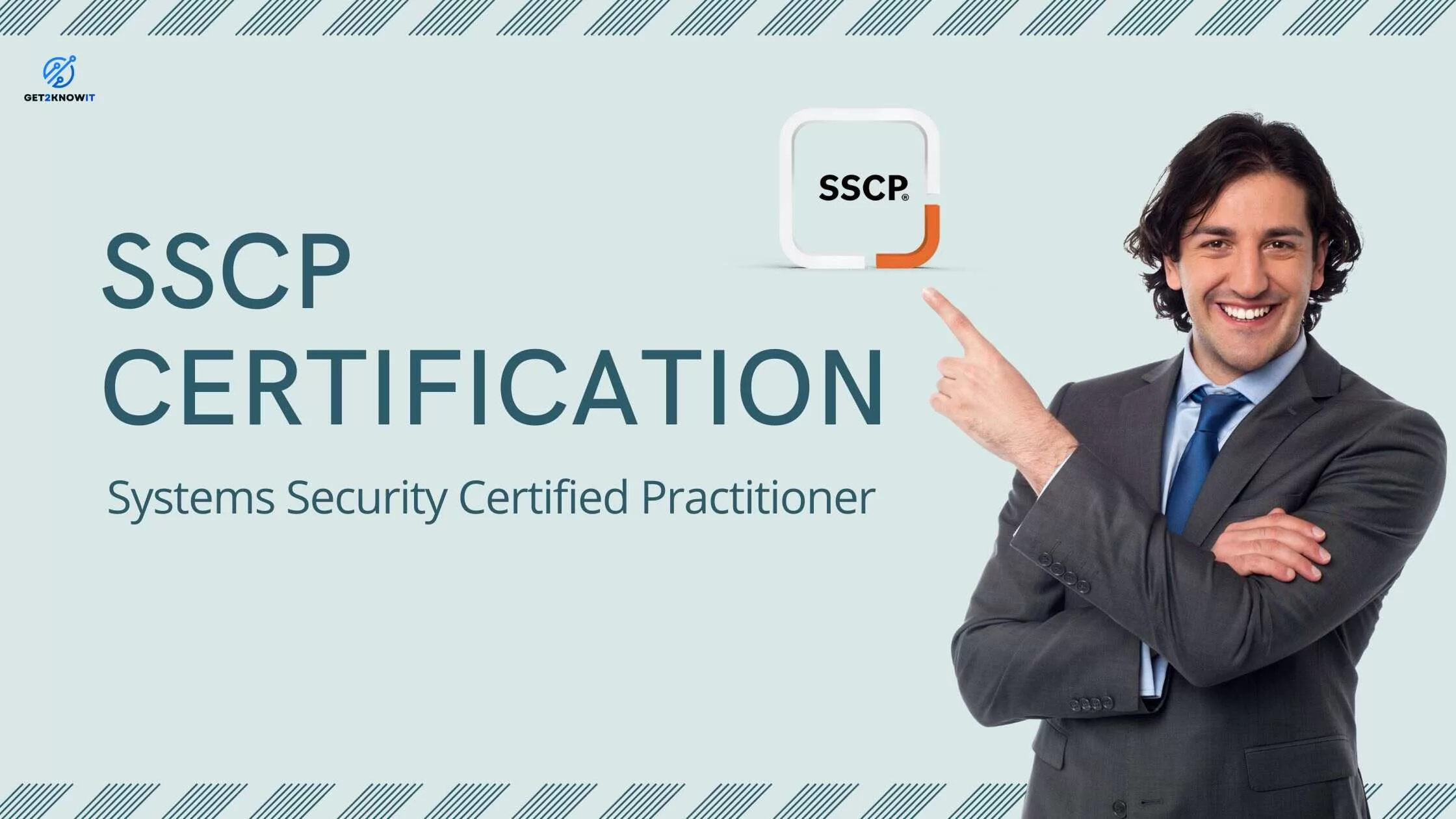The CSSLP certification stands out as a pivotal credential. As we navigate today’s complex digital terrain, characterized by persistent cyber threats and rapidly advancing technologies, the CSSLP certification proves essential. Rooted in a specialized skill set focused on secure software development, CSSLP empowers professionals to fortify applications against vulnerabilities.
This certification is not just a qualification; it’s a testament to an individual’s commitment to addressing the underestimated effects of software development security. This introductory exploration delves into the importance of CSSLP in the contemporary cybersecurity landscape, shedding light on its role in fostering secure software practices and contributing to global cybersecurity standards.
Understanding CSSLP
CSSLP (Certified Secure Software Lifecycle Professional) is a certification designed for software and application developers responsible for integrating secure coding practices throughout the software development lifecycle. Launched in 2008 by the International Information System Security Certification Consortium, or ISC2, CSSLP holds significant importance in the field of cybersecurity.
The certification verifies professionals’ skills in creating secure software and applications, confirming their ability to handle security concerns throughout the software development stages. CSSLP encompasses key domains like secure software concepts, requirements, design, implementation/coding, testing, and lifecycle management.
Historical Background and the Evolution of CSSLP Certification
CSSLP’s historical background traces its roots to the increasing need for secure software development practices. As cyber threats evolved, the importance of integrating security into the software development lifecycle became evident. The certification emerged to meet this demand, offering developers a framework to bolster the security of their software.
Over the years, CSSLP has evolved to keep pace with the dynamic landscape of cybersecurity and software development. Updates in content, domains, and examination processes reflect the ongoing commitment of ISC2 to ensure that CSSLP remains relevant and effective in addressing contemporary security challenges.
Overview of ISC2 (International Information System Security Certification Consortium)
The International Information System Security Certification Consortium (ISC2) is a renowned organization that offers a range of certifications, including CSSLP. ISC2 is committed to advancing information security and cybersecurity globally through education, certification, and professional development. Professionals worldwide use ISC2 certifications to showcase their expertise and dedication to securing information systems.
Highly respected in the industry, ISC2 certifications span domains like cloud security, information systems security, and secure software development. The organization plays a vital role in establishing and upholding standards for cybersecurity professionals in this dynamic field..
CSSLP Certification Domains
The Certified Secure Software Lifecycle Professional (CSSLP) certification, offered by the International Information System Security Certification Consortium (ISC2), is a prestigious credential for software and application developers. The CSSLP exam is structured around seven domains, each addressing crucial aspects of secure software development. Let’s delve into an in-depth analysis of these domains to understand the breadth and depth of knowledge required for CSSLP certification.
Domain 1: Secure Software Concepts
This domain forms the foundation, covering core concepts and security design principles. Candidates are tested on their understanding of fundamental security principles crucial for developing robust and secure software.
Domain 2: Secure Software Requirements
Ensuring security from the outset, this domain focuses on integrating security requirements into the software development process. It examines the skills needed to identify and document security requirements effectively.
Domain 3: Secure Software Design
Here, candidates explore the principles of designing secure software architectures. Topics include security models, system and application layer security controls, and the integration of security controls into the design.
Domain 4: Secure Software Implementation/Programming
This domain assesses the ability to implement secure code by evaluating programming languages, coding practices, and secure coding guidelines. It ensures candidates can translate security requirements into robust software.
Domain 5: Secure Software Testing
Security testing is paramount in the software development lifecycle. This domain covers various testing methods and techniques to identify and rectify security vulnerabilities effectively.
Domain 6: Secure Software Lifecycle Management
Candidates are tested on their knowledge of managing and guiding secure software projects throughout the lifecycle. This includes risk management, project management, and integrating security into the software development process.
Domain 7: Deployment, Operations, Maintenance, and Final Disposal
The final domain focuses on secure deployment, operations, maintenance, and disposal of software. It ensures that professionals understand the ongoing security considerations post-deployment.
In conclusion, CSSLP certification reflects a holistic approach to secure software development, covering every phase of the software lifecycle. Earning this certification demonstrates a professional’s commitment to integrating security into every aspect of software engineering.
Benefits of CSSLP Certification
CSSLP (Certified Secure Software Lifecycle Professional) certification offers numerous benefits for professionals in the field of secure software development:
- Recognition of Advanced Skills: CSSLP certification demonstrates to employers and peers that you possess advanced technical skills and knowledge in application security, enhancing your professional recognition and credibility in the industry.
- Enhanced Career Opportunities: Holding a CSSLP certification opens up new career opportunities in secure software development. Employers value certified professionals who can contribute to building secure software applications.
- Industry Recognition: The certification is globally recognized and respected in the field of cybersecurity. It is awarded by the International Information System Security Certification Consortium (ISC2), adding prestige to your professional profile.
- Skill Validation: CSSLP certification validates your expertise in secure software development practices, including identifying and mitigating security issues throughout the software development lifecycle (SDLC).
- Competitive Advantage: In a competitive job market, CSSLP certification sets you apart by showcasing your commitment to excellence and continuous learning in the evolving landscape of secure software development.
- Networking Opportunities: Being part of the CSSLP-certified community provides networking opportunities with like-minded professionals. This network can be valuable for sharing insights, best practices, and staying updated on industry trends.
- Contributions to Secure Software Supply Chain: Professionals with CSSLP certification can contribute to securing the software supply chain and software acquisition, aligning with industry best practices.
- Personal and Professional Growth: Pursuing and obtaining CSSLP certification is a journey of personal and professional growth. It reflects dedication to mastering secure software development principles and staying at the forefront of cybersecurity.
Real-world Applications of CSSLP Certification
The CSSLP (Certified Secure Software Lifecycle Professional) certification holds significant real-world applications, showcasing its value in the dynamic field of secure software development. Individuals with CSSLP certification are recognized as experts in application security, equipped with the knowledge to identify and mitigate security risks across the entire software development lifecycle (SDLC).
This certification enhances professionals’ capabilities in applying secure coding practices, ensuring that software and applications are developed with security considerations from the initial design phases to deployment and maintenance. CSSLP-certified individuals play pivotal roles in risk mitigation, compliance assurance, and leading development teams with a security-first mindset. Their expertise contributes to secure software deployment practices and effective incident response, making them valuable assets in maintaining the integrity and resilience of software applications in today’s cybersecurity landscape.
CSSLP vs Other Security Certifications
The Certified Secure Software Lifecycle Professional (CSSLP) certification stands out among various security certifications, offering a specialized focus on secure software development. Here is a brief comparison with other notable security certifications:
- CISSP (Certified Information Systems Security Professional): CISSP is a broader, foundational certification covering various aspects of information security, suitable for mid to high-level security practitioners with a general focus.
- CCSP (Certified Cloud Security Professional): CCSP is geared towards professionals specializing in cloud security, emphasizing skills related to securing cloud environments.
- HCISPP (HealthCare Information Security and Privacy Practitioner): HCISPP is designed for individuals working in healthcare security, addressing specific security and privacy challenges within the healthcare industry.
- CAP (Certification and Accreditation Professional): CAP focuses on the skills required for the certification and accreditation of information systems, emphasizing risk management processes.
- SSCP (Systems Security Certified Practitioner): SSCP is an entry-level certification covering various domains within information security, providing a foundational understanding of security concepts.
While certifications like CISSP offer a broad understanding of information security, CSSLP caters specifically to professionals involved in secure software development, ensuring a comprehensive skill set in this specialized domain.
CSSLP Certification Process
The Certified Secure Software Lifecycle Professional (CSSLP) certification is awarded by (ISC)² and is designed for professionals involved in secure software development. Here’s a step-by-step guide on how to obtain CSSLP certification:
- Prerequisites:
- Eligibility requires candidates to possess a minimum of four years of paid work experience in one or more CSSLP domains. Alternatively, those with a three-year bachelor’s degree in a related field can qualify with one year of requisite experience.
- Exam Preparation:
- Utilize (ISC)² official study resources, including study guides and practice exams available on the official ISC2 website.
- Exam Registration:
- Register for the CSSLP exam through the (ISC)² website after thorough preparation.
- CSSLP Exam:
- The CSSLP exam tests candidates on eight domains, including Secure Software Concepts, Secure Software Requirements, Secure Software Design, Secure Software Implementation/Programming, Secure Software Testing, Secure Software Lifecycle Management, and Software Deployment, Operations, Maintenance, and Disposal.
- Associate of (ISC)²:
- Candidates who pass the exam but lack the required experience can become an Associate of (ISC)² until they fulfill the experience requirements. This allows them to use the title and work towards gaining the necessary experience.
- Experience Requirements:
- Obtain a minimum of four years of cumulative, paid work experience in one or more of the CSSLP domains. Relevant education and professional certifications may be substituted for a portion of the experience.
- Maintaining Certification:
- CSSLP certification is valid for three years.
- Maintain certification by earning Continuing Professional Education (CPE) credits. Engage in activities such as attending security-related conferences, webinars, and training sessions.
- Renewal:
- Submit the required CPE credits and pay the annual maintenance fee to renew the CSSLP certification.
Following this step-by-step guide ensures a structured approach to obtaining and maintaining the CSSLP certification, demonstrating expertise in secure software development throughout one’s career.
Future Trends in Application Security
As we look ahead, several trends are shaping the future of application security:
- DevSecOps Integration:
- The integration of security into the DevOps pipeline continues to be a priority. DevSecOps emphasizes a collaborative approach, ensuring security is embedded throughout the software development lifecycle.
- Increased Speed and Frequency of Releases:
- The speed of DevOps practices is accelerating, leading to more frequent software releases. Application security measures must adapt to this increased pace without compromising safety.
- Advanced Testing Techniques:
- Application security testing is evolving with more advanced techniques. Automation, AI, and machine learning are being leveraged to identify and address vulnerabilities efficiently.
With the widespread adoption of containers and cloud-native technologies, security measures are adapting to protect applications in these environments.




